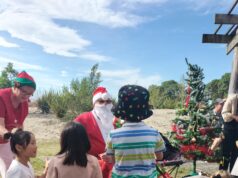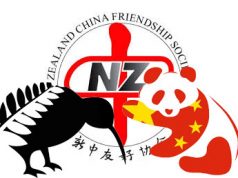Marilyn Gibbs and Lillian Li-Kurtovic
on the
Prominent Persons and Leaders Delegation, 2012
~ Next meeting: 3 May ~
The full pdf of this newsletter is available at: NZCFSNelsonAprilMay2013.pdf
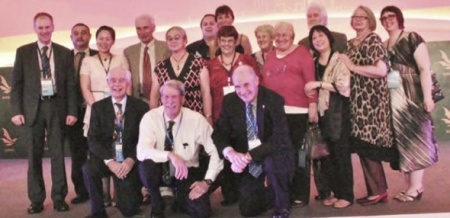 Nelson’s nominees for the 2012 Prominent Persons and Leaders Tour, Marilyn Gibbs and Lillian Li-Kurtovic, travelled to China last September as members of this prestigious annual delegation, hosted by the Chinese People’s Association for Friendship with Foreign Countries (Youxie).
Nelson’s nominees for the 2012 Prominent Persons and Leaders Tour, Marilyn Gibbs and Lillian Li-Kurtovic, travelled to China last September as members of this prestigious annual delegation, hosted by the Chinese People’s Association for Friendship with Foreign Countries (Youxie).
Marilyn, Chair of the Nelson City Council Sister Cities Coordinating Committee and longtime NZCFS member, and Lillian, originally from Xi’an and Nelson Branch Executive member, will report on their wonderful experiences.
As part of the delegation, they enjoyed exploring parts of two different regions and attended two important conferences: the Friendship Forum in Changchun, Jilin Province (northeast of Beijing) with the theme “Understanding, Sharing and Win-Win”, and the International Sister Cities Conference in Chengdu, Sichuan Province, with the theme “Green Life, Happy Cities”.
Friday 3 May .. Hearing House .. 5:30 pm
To arrange catering, please ring:
Barbara Markland ph. 544 4712 by Tuesday 30 April
or e-mail: [email protected]
Many of you will have seen the recent news about the special ceremony in Beijing as a Maori cloak, given to Chairman Mao in 1957, is loaned to Te Papa Museum. The NZCFS has helped facilitate its display here.
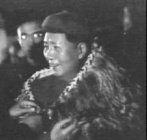 As a special treat, we will begin the evening with “Inside Red China”, the documentary which includes the original presentation of the cloak to Mao by film-maker Ramai Hayward, on behalf of the Maori King, King Koroki. This fascinating film amazed our Chinese guests at our 60th Anniversary Conference last year – you will enjoy seeing it too. More information at:
As a special treat, we will begin the evening with “Inside Red China”, the documentary which includes the original presentation of the cloak to Mao by film-maker Ramai Hayward, on behalf of the Maori King, King Koroki. This fascinating film amazed our Chinese guests at our 60th Anniversary Conference last year – you will enjoy seeing it too. More information at:
https://nzchinasociety.org.nz/11815/maos-maori-cloak-coming-soon-to-te-papa/
As usual, we will begin at 5.30 p.m. and then enjoy our buffet meal (cost $12), at 6 p.m., after the film. Our speakers will begin about 7 p.m.. Friends and visitors are most welcome but please notify Barbara so we have accurate numbers for the meal.
LAST MEETING: Over fifty members and friends were treated to an amazing insight into North Korea at our March meeting. Royden Smith toured there last October and shared a selection of his vast collection of photographs, video clips and observations. Everyone present now has greater knowledge and understanding of life in the ‘hermit state’, and we are enormously grateful to Royden for his personal insights. While, as Royden pointed out, he was on a conducted tour being presented with ‘best views’, the vexing problems of the Korean Peninsula are now somewhat more comprehensible to some Nelsonians. Thanks so much, Royden – your images and comments will continue to inform and engage us. Christchurch Branch will be enjoying Royden’s presentation at their May meeting, and we encourage them to widely advertise this special story.
2013 SUBSCRIPTIONS: Thanks very much to those who have already paid their 2013 subscription – it is hugely appreciated. Reminder subscription forms will be emailed or posted out with this newsletter so you can bring your payment to the next meeting. Please make sure you let us know if any of your details have changed when you return the form so that we can make sure our records are up to date.
Single $15 Couple $25 School $25 Corporate $30
NATIONAL CONFERENCE 2013: Several members of your committee will be travelling to Christchurch for our conference and AGM from 24-26 May – how about coming too? Registration forms and details are now up on the Society’s webpage: https://nzchinasociety.org.nz/12630/nzcfs-national-conference-2013/
The theme of the 2013 National Conference and AGM, hosted by Christchurch Branch, is “Chinese Culture”. There will be an exhibition of paintings from Beijing, a tour of the amazing Chinese collection at the Canterbury Museum, as well as calligraphy, tai chi, paper cuts, mahjong, and musical performances – with as much hands-on involvement by delegates as possible. Several interesting speakers have been confirmed, including the Christchurch Consul-General, Mme Tan Xiutian. With this year’s Conference just a drive away, it would be great to see an excellent contingent from our Branch.
RACE UNITY DAY: Surely it could not happen two years in a row, but it did! Race Unity Day was pretty much a wash-out. It wassuch a shame for the organisers of this special occasion that attendance was limited by the atrocious conditions. Our stall was cleverly situated between two food stalls, so the foot traffic was as good as could be expected. Visitors appreciated the Chinese teas 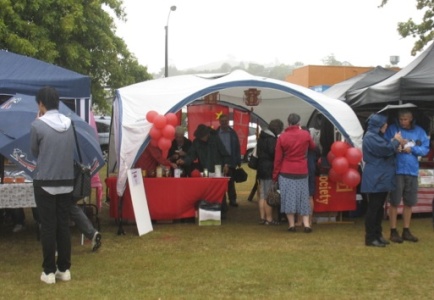 coordinated by the Beatsons, patrons were kept relatively dry under Paul Markland’s extra special gazebo decorated with flags and lanterns, and we took over $200 from donations and the sale of Chinese artifacts. We were able to do some networking with locals interested in China friendship and some students from NMIT who braved the rain. We gave gifts to Snake Year birthday people, and provided advertising leaflets about our Society, and information about the He Ming Qing Scholarship, to all our visitors.
coordinated by the Beatsons, patrons were kept relatively dry under Paul Markland’s extra special gazebo decorated with flags and lanterns, and we took over $200 from donations and the sale of Chinese artifacts. We were able to do some networking with locals interested in China friendship and some students from NMIT who braved the rain. We gave gifts to Snake Year birthday people, and provided advertising leaflets about our Society, and information about the He Ming Qing Scholarship, to all our visitors.
MEMBER NEWS: It is great to hear that our good friend Bill Willmott is back home and making a steady recovery after a spell in hospital following a stroke and we send our very best wishes from Nelson Branch to Bill and Di Madgin as they cope with these extra health pressures while they soon move out of their earthquake-damaged house and into their new home in Heathcote Valley.
We welcome Mark Soper as a new member. As noted earlier, he has been studying and teaching Traditional Chinese Medicine in Chengdu and has a particular interest in the promotion of Chinese tea.
Nelson Branch Executive member, Wang Yuan, has had his residency application approved on the basis of his business set-up. This has been a long process for him and broken new ground as usually residency is awarded only on the basis of full time employment. Congratulations, Yuan!
Welcome home to Sally Warren and Pam and Fred Frahm who are returning from the NZCFS Explore China: The South-East Tour, at the end of April – we look forward to hearing all about it later in the year.
All the very best to President Christine and Bruce Ward for a fascinating and safe journey to Europe – we will certainly miss their expertise while they are away from the beginning of May until the end of July.
CONFUCIUS INSTITUTE TO HAVE RESOURCE CENTRE AT NMIT: South Island Vice-President Royden Smith and Nelson President Christine Ward attended the signing of this agreement between the Nelson Marlborough Institute of Technology and the Confucius Institute on Tuesday, April 17. Held in the impressive foyer of the new Arts Building on Nile Street, this was a unique meeting between Chinese Consulate staff from Christchurch and the PRC Embassy in Wellington, staff of NMIT and Canterbury University, Nelson business and local body leaders, as well as local Chinese and friends of China.
NMIT explains the significance of this initiative:
“Confucius Institutes (CI) are accredited by the headquarters of the Confucius Institute in Beijing under the Office of the Chinese Language Council International (Hanban) and are situated around the world to promote Chinese culture and the underpinning philosophy of Confucius. Accreditation to become a CI is a rigorous, and often long, process. A CI may establish a number of branches to reach out into various communities, usually academic institutions. These are called Confucius Resource Centres (CRC). CRCs are places that people interested in “all things Chinese” can gather to use its facilities and/or meet socially and gain support to provide specialised learning opportunities. The CRC will be a place open to the community to meet to foster cultural and economic cooperation and understanding. The primary functions of a CRC include: provision of resources to local communities, establishment and implementation of evening courses to local communities, cultural workshops to local organisations/businesses, and also provide practical support to local schools offering Chinese courses and/or offering activities focussed on Chinese cultural experiences. NMIT has long and valued relationships with tertiary education providers in China. We believe that by establishing the CRC in Nelson, NMIT will be able to facilitate cultural, academic and economic communication between Nelson businesses and organisations and China, for mutual benefit.”
We look forward to furthering the goals of the NZCFS by continuing our cooperation with the Confucius Institute and the establishment of a Resource Centre at NMIT. This is especially significant for Nelson to now have a place for promoting the teaching and learning of Mandarin. There are plans to have the centre operating by the end of this year.
DENG FUND AWARD TO NELSON BRANCH: Auckland businessman, Simon Deng Li, has generously donated a fund to be awarded annually for projects promoting the goals of NZCFS. Nelson Branch’s application has been successful and, as one of four recipients for 2013, has been granted $7,500 for our plan to reprint 1,000 copies of Nelson Provincial Museum’s publication of the Appo Hocton story (Appo Hocton: Woo Ah Poo Hoc Ting by Karen Stade) and distribute it nationwide.
Under the terms of the grant, we will send free copies to all high schools and NZCFS branches, and provide cost-price copies for resale to local museums and local bodies. Further copies will, we hope, be ordered and we will have some surplus to assist our goals of promoting Mandarin language teaching in Nelson and assisting with hosting arrangements for NMIT’s new Appo Hocton Scholar. This scholarship will be awarded soon to a student from Hubei Polytechnic University (in our Sister City, Huangshi).
The books will be printed in May, and the grant covers printing and distribution costs. We are grateful for the encouragement of Nelson Provincial Museum, author Karen Stade, designer Karen Price (Contexo) and Appo Hocton’s descendants, all of whom were involved in the first print-run which sold out very quickly after the launch.
We think this Nelson story and the associated research deserves to be celebrated through the wider distribution of the Appo Hocton book. Members who would like to see the guidelines for awarding the Deng funding and/or our application could email Christine at [email protected].
NATURE, CULTURE AND HISTORY TOUR: Another exciting new tour in the highly recommended “Projects” series, led by Dave Bromwich, is being offered this October. It combines a visit to a NZCFS project, where you will meet our project partners and visit rural communities, with a comprehensive itinerary traversing diverse natural, cultural and historical sites. Suitable for reasonably fit people looking for a total China travel experience not normally available on other tours, the tour traverses from Yanan, Shaanxi Province, in the North to Guilin, Guangxi Province, in the South.
The itinerary is now up on our Society’s website and it looks superb – a wonderful combination of places.
See: nzchinasociety.org.nz/12068/nzcfs-projects-nature-culture-history-china-tour-october-2013 and contact Dave at [email protected] to express your interest.
Many of you will have been on NZCFS tours before and know what great value they are. Even if you are unable to enjoy these particular tours yourself, remember that we are very dependent on our members spreading the good word – please advertise them to all your family, friends and colleagues and persuade everyone you know to go and explore China some more with the NZCFS!
CHINA BOOKS IN NELSON LIBRARY: Looking for something more on China to read? Try these:
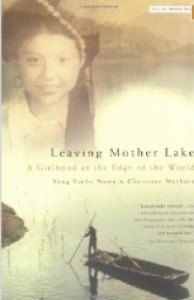 “Leaving Mother Lake – A Childhood at the Edge of the World” by Yang Erche Namu and Christine Mathieu: “This widely acclaimed memoir transports us to the remote reaches of the Himalayas, a place the Chinese call ‘the country of daughters’, to the home of the Moso, a society in which women rule.
“Leaving Mother Lake – A Childhood at the Edge of the World” by Yang Erche Namu and Christine Mathieu: “This widely acclaimed memoir transports us to the remote reaches of the Himalayas, a place the Chinese call ‘the country of daughters’, to the home of the Moso, a society in which women rule.
According to local tradition, marriage is considered a foreign practice; property is passed from mother to daughter; a matriarch oversees each family’s customs, rituals, and economies. In this culture a young girl enjoys extraordinary freedoms – but the impulsive, restless Namu is driven to leave her mother’s house, to venture out into the larger world, defying the tradition that holds Moso culture together. ‘Leaving Mother Lake’ is a book filled with drama, strangeness and beauty. Yet, for all the exoticism, Namu’s story is a universal tale of mothers and daughters – the battles that drive them apart and the love that brings them back together.”
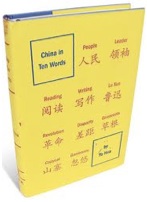 “China in Ten Words” by Yu Hua. In his first work of non-fiction, and using personal stories combined with an astute analysis that illuminates China’s meteoric economic and social transformation, Yu Hua illustrates what life is like for ordinary citizens of China through ten significant words:
“China in Ten Words” by Yu Hua. In his first work of non-fiction, and using personal stories combined with an astute analysis that illuminates China’s meteoric economic and social transformation, Yu Hua illustrates what life is like for ordinary citizens of China through ten significant words:
People 人民, Leader 领袖, Reading 阅读, Writing 写作, Lu Xun 鲁迅 (an influential writer revered by Mao), Revolution 革命, Disparity 差距, Grassroots 草根, Copycat 山寨, and Bamboozle 忽悠.
In Copycat, for example, he depicts the escalating trend of piracy and imitation as a creative new form of revolutionary action. In Bamboozle, he describes the increasingly brazen practices of trickery, fraud, and chicanery that are, he suggests, becoming a way of life at every level of society. Fascinating!
BIG!
– Ferry and Aukje Both
Travelling in our free time, we soon learnt that there are no small cities in China, even though the locals might apologise for the size of their city; if it has a population the size of New Zealand, it does not register as “small” in our minds. Here, a real city will have at least ten million inhabitants. Any city with less than five million people who call it their home is small, according to most Chinese. And people here are not particularly proud of “small”.
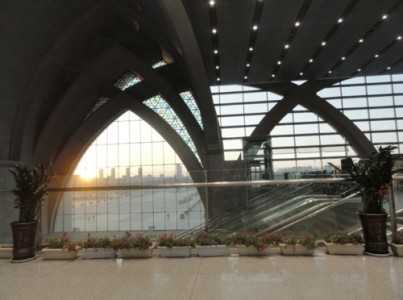 However, not much is small in China. “Big is better” seems to be the motto. Passing through the country, we saw many new train stations the size of international airports and in the outskirts of cities the skyline is dominated by hundreds of cranes pecking at new high-rise apartment buildings. Old neighbourhoods are torn down and replaced by tall towers and six to eight storey high blocks of concrete. Many are still empty skeletons. An item on the news mentioned an expected increase of 500 million migrants from the countryside to the cities in the next few years. It looks as if there is enough space to house them, if they are able to afford it.
However, not much is small in China. “Big is better” seems to be the motto. Passing through the country, we saw many new train stations the size of international airports and in the outskirts of cities the skyline is dominated by hundreds of cranes pecking at new high-rise apartment buildings. Old neighbourhoods are torn down and replaced by tall towers and six to eight storey high blocks of concrete. Many are still empty skeletons. An item on the news mentioned an expected increase of 500 million migrants from the countryside to the cities in the next few years. It looks as if there is enough space to house them, if they are able to afford it.
In these new suburbs, roads are often six lanes wide but yet devoid of traffic. In the poorer parts of China taxis and trucks still outnumber private cars, but in the east of the country this is changing fast and it is a worry to think what will happen if this trend continues. How congested will the roads become? Where are people going to park their cars? Just as well that public transport is under constant development all over the country. Pillars for new super-fast train tracks, major construction for the underground and separate bus lanes are evident in many places.
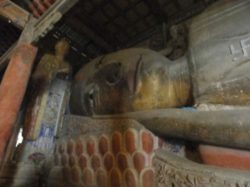 Big is something that will even put small cities on the map. Zhangye, where we live, is proud of its Dafo temple. It houses the “biggest indoor reclining clay Buddha” in China, looking as if it just woke up from a pleasant dream.
Big is something that will even put small cities on the map. Zhangye, where we live, is proud of its Dafo temple. It houses the “biggest indoor reclining clay Buddha” in China, looking as if it just woke up from a pleasant dream.
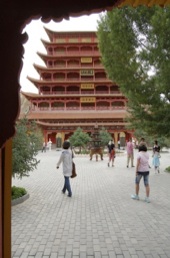
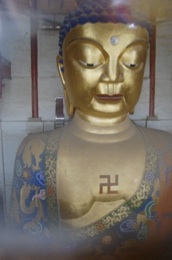 Shandan, less than an hour away by bus, boasts the “biggest indoor sitting Buddha” in China. In front of this Buddha temple, the city is constructing a large, new temple complex, with lots of marble and impressive gates. Plans are to run a Kung Fu school there. Right in the middle, on a tall platform, will be another enormous statue towering over the area. To get to the Shandan Buddha we took a dirt road that went past some fields and through a small farming community. However, it will not be long before this area is ready for large groups of tourists, complete with a wide approach road and parking for numerous tour buses.
Shandan, less than an hour away by bus, boasts the “biggest indoor sitting Buddha” in China. In front of this Buddha temple, the city is constructing a large, new temple complex, with lots of marble and impressive gates. Plans are to run a Kung Fu school there. Right in the middle, on a tall platform, will be another enormous statue towering over the area. To get to the Shandan Buddha we took a dirt road that went past some fields and through a small farming community. However, it will not be long before this area is ready for large groups of tourists, complete with a wide approach road and parking for numerous tour buses.
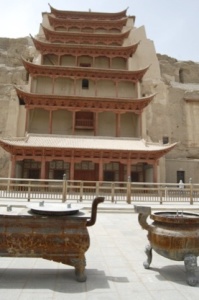 The Mogao caves in the small desert city of Dunhuang are world famous for their huge collection of Buddhist art. In the grottoes one can admire walls covered with well-preserved murals, sculptures and several good sized Buddha statues, one of them claimed to be the “third largest stone Buddha” on Earth.
The Mogao caves in the small desert city of Dunhuang are world famous for their huge collection of Buddhist art. In the grottoes one can admire walls covered with well-preserved murals, sculptures and several good sized Buddha statues, one of them claimed to be the “third largest stone Buddha” on Earth.
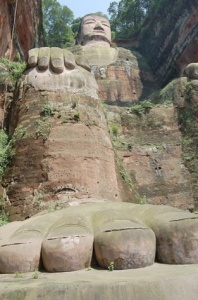 Our favourite is the world’s “largest sitting Buddha”, carved out of a rock in Leshan over 1200 years ago – a serene-looking, 71 metre tall giant, watching over the Dadu River near Chengdu.
Our favourite is the world’s “largest sitting Buddha”, carved out of a rock in Leshan over 1200 years ago – a serene-looking, 71 metre tall giant, watching over the Dadu River near Chengdu.
According to legend, he was too upset to see the devastation caused by a great flood in 1962 and closed his eyes to all the suffering. It was the paint that had peeled off his eyes. In the humid climate, it is an on-going job to keep the Buddha freshly painted and clear of moss and weeds.
Now, new and even bigger Buddha are being built in several locations in Asia and China is joining the race to claim another biggest Buddha of some sort. But it is the ancient ones that have been around for hundreds of years that leave the biggest impression.



